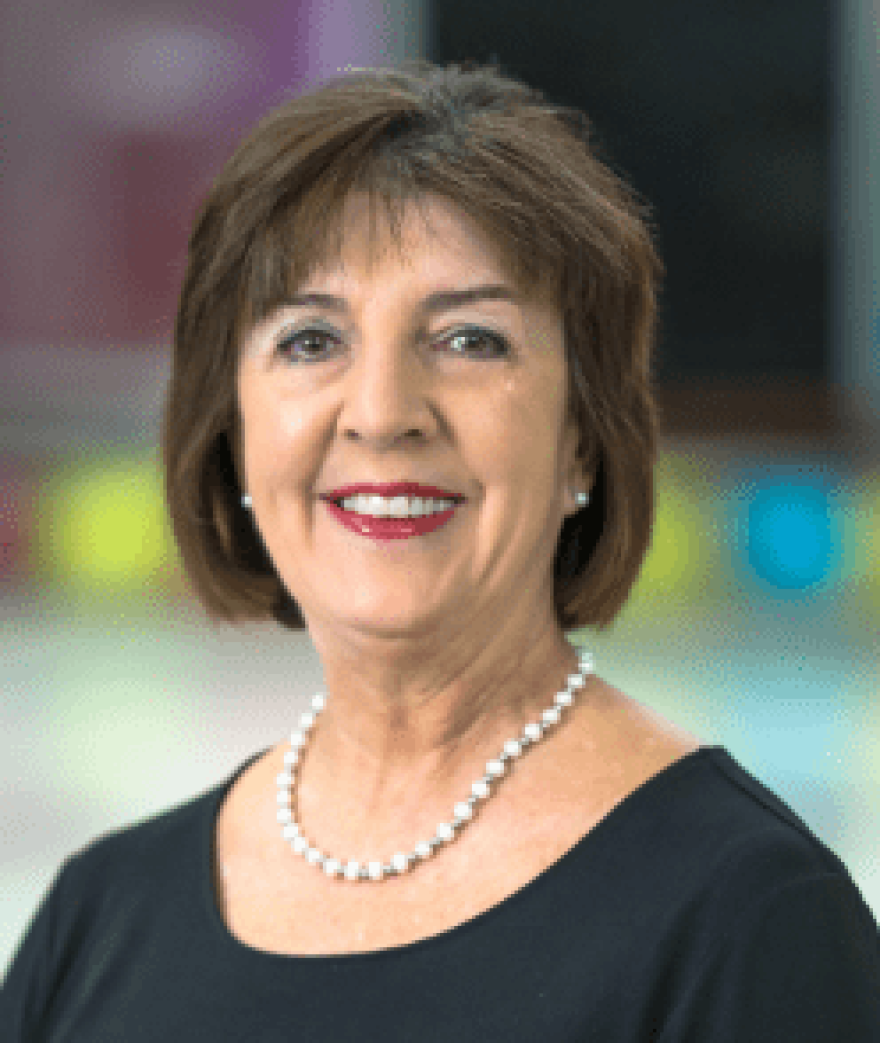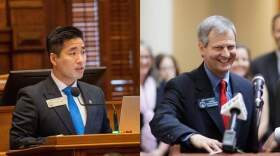Advocates and lawmakers say it’s looking more like a question of how, rather than if, Oklahoma will unlock federal funds to help about 5% of the state’s population pay for health insurance. But a fight is emerging over how to cover the state’s costs.
A funding battle is quietly brewing at the State Capitol.
As lawmakers return to begin this year’s legislative session, the question of whether Oklahoma should add an estimated 200,000 low-income adults to the state’s Medicaid rolls will be front and center.
Gov. Kevin Stitt’s soon-to-be-announced health plan, an upcoming state question to expand Medicaid and a smattering of proposals from lawmakers that are in various stages of development are all on the table.
Many advocates and lawmakers say it’s looking more like a question of how, rather than if, Oklahoma will unlock federal funds to help about 5% of the state’s population pay for health insurance.
But outside of the thorny issue of how the expansion is structured, two major questions are lurking in the background: Exactly how much will this cost Oklahoma and how will the traditionally tax-averse state find tens of millions in state money needed to unlock the nine-to-one federal matching funds that would pay for the expansion.
This could trigger tough conversations about the possibility of budget cuts, tax increases or hospital or provider fees to cover the cost.

These issues, so far, have largely been restricted to behind-the-scenes talks among policymakers, health advocates and others.
But legislative leaders and health officials interviewed by Oklahoma Watch said there is growing acknowledgment that the governor and the Legislature should be prepared to act sooner rather than later.
“I understand the timeline is a year out, however, we must consider the cost now,” said Senate Appropriations Chairman Sen. Roger Thompson, R-Okmulgee. “At the moment, there is no firm pathway approved by the Legislature of how to arrive at the needed funds.”

If all goes according to Oklahomans Decide Healthcare’s plan, voters will approve State Question 802 later this year, triggering a requirement that the new expansion group will be eligible for Medicaid no later than July 1, 2021.
The state question, however, is silent on how this major health-care policy change will be paid for.
Some studies, including a 2013 state-commissioned report, estimated that the state’s share of the costs would range from $137 million to $158 million if Oklahoma’s Medicaid expansion took effect in 2021. But the report anticipates a net cost of $49 million to $81 million when anticipated savings in existing programs across state government are also considered.
But lawmakers caution that those numbers might be outdated, and some, including Thompson, think the state’s net cost will be higher, potentially topping $100 million, in just the first year of expansion.
If this occurs, Republican leaders, including Stitt, are already suggesting that budget cuts would be needed as opposed to using savings or finding new revenue.
“If SQ 802 passes, our state agencies will experience deep cuts, because the ballot measure offers no mechanism to pay for it,” said Stitt spokeswoman Baylee Lakey. “The governor does not support this unfunded mandate.”

House Speaker Charles McCall, R-Atoka, similarly expects that the Legislature will have to look at cuts to “priorities like education, transportation and other core functions” to pay for the expansion.
“General revenue is stretched thin already, and tax hikes or savings fund raids are nonstarters, so it’s going to take cuts elsewhere or another funding mechanism to make a plan work,” he said.
Democratic leaders, however, are calling for a different approach.
House Minority Leader Emily Virgin, D-Norman, said lawmakers need to be open to all ideas, including tax increases, despite the challenge of meeting the legislative requirement that revenue-raising proposals pass with a three-fourth supermajority in both chambers.

“We don’t want a regressive form of taxation, like the sales tax, that will hit lower-income people harder,” she said. “I think the House Democratic caucus would want to look at taxes that are progressive in nature or something that was paid by those industries that are going to benefit.”
Even if the Legislature seeks to preempt the vote of the people by passing a Medicaid expansion plan different from the traditional expansion model outlined in the state question, the funding question won’t go away.
“If Medicaid expansion passes, it will cost the state,” Thompson said. “There have been discussions, and will continue to be discussions, on how to pay for it and from what source.”
What Other States Have Tried
A 2018 analysis from the media and research firm Governing found that the majority of expansion states used existing general funds or savings to pay for expansion.
With about a billion dollars in the state’s rainy day fund, this could also be an option for Oklahoma. But this would almost certainly face opposition from many Republicans, including Stitt, who wants to grow the rainy day fund to $2 billion by the end of his first term.
The Governing study, however, noted that more than a dozen states have looked at new taxes, assessed fees on hospitals or health providers or cut Medicaid costs to at least partly pay for expansion.
Several states that have increased taxes, including California and Indiana, have upped their tobacco taxes. Oklahoma lawmakers took this route two years ago when they passed a $1-per-pack increase to help pay for the 2018 teacher pay-increase package. It raised about $130 million a year.
Virgin said it’s unlikely that House Democrats would support increasing the cigarette tax again so soon, as they view it as a regressive tax and not a steady revenue stream due to dropping cigarette usage.
Another option is to tax or increase fees on hospitals and other medical providers to cover the state’s share of the cost. The idea is that these providers, which are projected to see a steep drop in their costs for uncompensated care, would be one of the biggest beneficiaries of expansion and can afford to pay more.
Oklahoma State Medical Association President Larry Bookman said he’s heard policymakers discussing increasing or diverting fees from the Supplemental Hospital Offset Payment Program. The program, implemented in 2011, charges a 2% assessment on dozens of hospitals’ net patient revenues, which are used to leverage federal matching funds and help shore up the state’s Medicaid program.
Bookman said his organization isn’t weighing now on how the state should fund the expansion. He said the medical association’s main priority is just that something is passed this year to maximize federal dollars to battle the state’s uninsured rate, which is the second highest in the nation.
“We need to pass something comprehensive to cover those making up to 138% of the poverty level,” he said. “The governor wants to make us a Top 10 state, but we don’t even have a chance of cracking the top 20 without these federal funds.”
But Oklahoma Hospital Association President Patti Davis said she has concerns about relying on hospitals to pay for the bulk of expansion costs. She said smaller hospitals, in particular, could be damaged by this.

“Everything should be on the table,” she said. “ But do I think hospitals should bear the whole burden? No, I do not.”
Davis added she thinks the cost to the state will be smaller than many expect.
In addition to millions in savings for the state from reducing or eliminating state-funded health costs, the expansion would inject more than a billion dollars into Oklahoma’s health-care sector and eventually boost state revenues.
“That means there will be more health-care workers, and those workers will be paying income taxes and buying goods and services,” she said.
Can This Wait Until 2021?
While there is disagreement over how to find the revenue should the state question or another Medicaid expansion plan pass, lawmakers and medical leaders agree that the state can’t afford to wait too long. Still, it is unlikely that lawmakers will try to pass revenue options this session.
Virgin said she would support the creation of a formal task force to look at the cost estimates, potential savings and how the state should fund expansion.
“Getting public input will be important as well,” she said. “That is something we are missing in the Legislature since we don’t really have a formal process to take public comment.”
Virgin added this would prevent lawmakers from being caught “flat-footed” and scrambling to respond. That’s what happened after passage of 2018 state question legalizing medical marijuana, she said.
Davis, of the hospital association, agreed lawmakers shouldn’t wait to see if SQ 802 passes before starting to plan. She said she hopes the governor and Legislature include the health community in these talks, which she said hasn’t occurred yet.
“Right now no one has come to us and said, ‘Here is our plan,’” she said. “But we believe now is the time to act and that is why we’ve been involved in the ballot initiative.”






